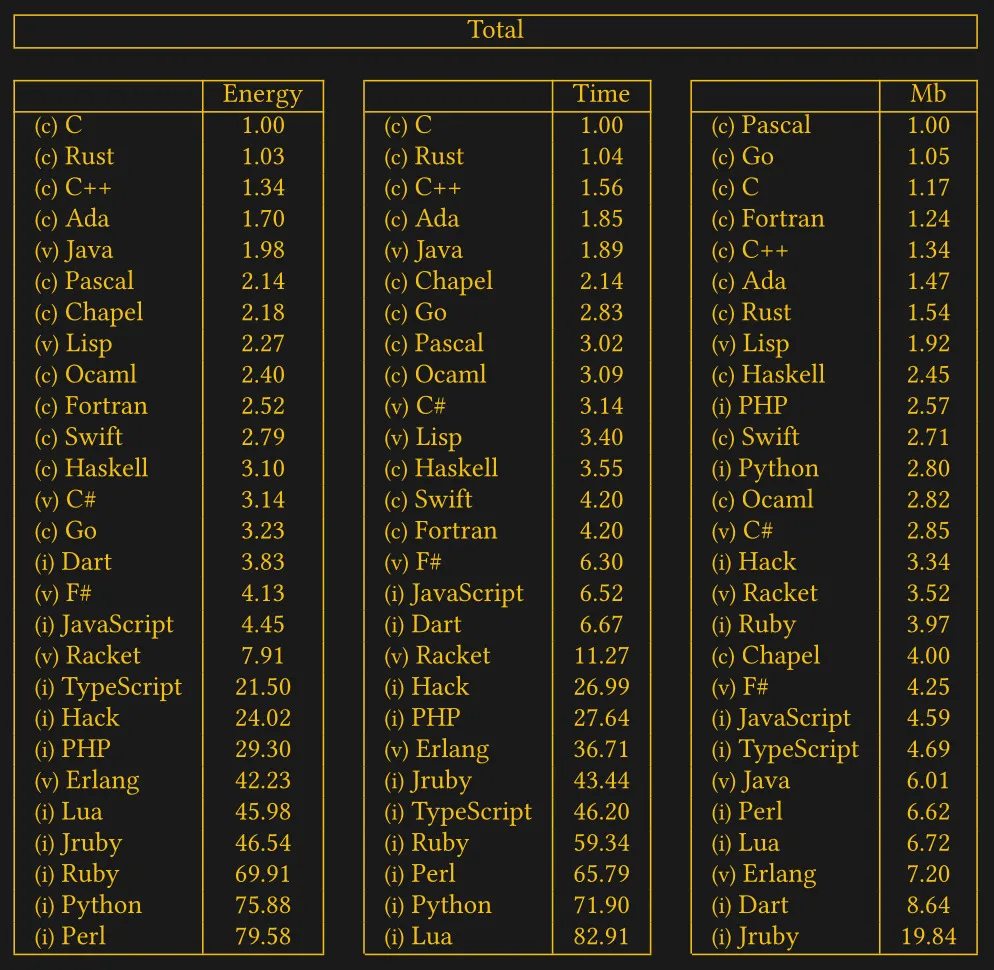
Sustainability has been a newer aspect for industries in the 21st century. Each and every industry is striving to reduce their carbon footprint and impact on the environment. Industries are moving away from traditional energy sources like thermal power plants and adopting greener options such as solar and wind energy. They are also upgrading to more energy-efficient computing systems.
Also Read : “Semiconductor Developers in India may earn Triple the Starting Salary of Software Engineers
One area that has received less attention is the importance of energy-efficient coding languages and practices in contributing to sustainability in software development. Software serves as the foundation of every system, directly or indirectly affecting the energy requirements of that system. Hence, it is crucial for software developers to be aware of the most energy-efficient coding languages and practices to develop sustainable and eco-friendly applications.
Before delving into the list, let’s first explore the factors that play a significant role in the energy efficiency of coding languages.
Factors contributing to the energy efficiency of a coding language
Just like languages for humans are a way to easily and efficiently communicate their ideas and thoughts , coding languages efficiently communicate their purpose to the interpreter or compiler, enabling faster and more accurate command execution.
In addition to fulfilling their primary goal, coding languages must also be understandable to the humans writing the code. Well, it is not a necessity, but the more familiar the language is , the easier it will be for programmers to write error-free and efficient code.
So coding languages are expected to have two properties.
1)Human friendly nature.
2) Compilers and interpreters friendly nature.
And these two properties, along with some other factors, totally govern how energy efficient a coding language is.
Let’s try to go into detail.
How human friendliness of a coding language affects its energy efficiency ?
Prioritising the human friendliness nature of a code leads to what is called higher levels of abstraction, meaning the language itself handles complex details automatically, allowing developers to focus on writing clear and concise code.
So, if the language itself is handling complex details automatically, it would lead to additional layers of processing during program execution, which would further lead to increased runtime .
More runtime means more requirement of computational power and, consequently, more energy.
Instead, if we look at languages that are not that human-friendly, they have much lower levels of abstraction, which allows developers to optimise the code at the system level.
This optimisation can lead to fewer resource requirements, minimise unnecessary computations, and manage memory more efficiently, thus reducing the overall energy requirements.
To provide a quick comparison of energy requirements between a higher abstraction level language and a lower abstraction one, consider Python, known for its human-friendly nature, consumes 45 times more energy than C, a language with lower abstraction levels. I mean, that difference is huge.
C wins the trophy of the most energy efficient coding language.

According to the research paper Ranking Programming Languages by Energy Efficiency published on January 4, 2021, by researchers Rui Pereira, Marco Coutoc, Francisco Ribeiroc, Rui Ruac, J´acome Cunhac, Joao Paulo Fernandesd, and Joao Saraivac, C was found to be the most energy efficient coding language, with Rust, C++, Ada, and Java coming at 2nd , 3rd , 4th and 5th most efficient coding languages, respectively.
Also ,Python got the award of the second least energy efficient coding language with Perl bottoming the list.
Here are the complete energy efficiency rankings of various coding languages on a scale of 1 to 100.
The ranking is based on a study based on data from The Computer Language Benchmarks Game (CLBG). Actually, the study used 10 well-defined programming problems from the CLBG repository, which included tasks like N-queens, 100-doors, and the Sieve of Eratosthenes. For no bias, the most efficient version of the source code was selected for each problem for every coding language. The efficiency metrics considered were energy consumption (in joules), execution time (in milliseconds), and memory usage. To combine the results from individual tasks into an overall ranking, the Schulze method was used. This method helps aggregate results from various tasks to produce a single comprehensive ranking for each language.
Conlusion:
The software industry will see a whole new generation of software developers working towards sustainability. Newer coding languages will be developed keeping energy efficiency in mind, and a new trend of sustainable developers hiring will start.
Discover more from WireUnwired Research
Subscribe to get the latest posts sent to your email.











